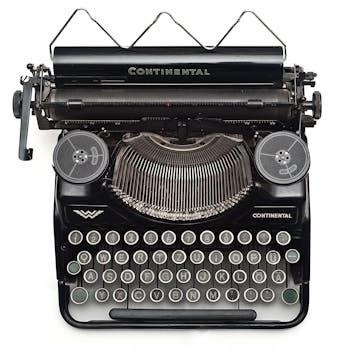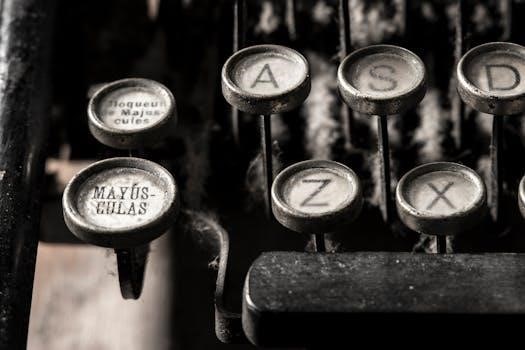The Lexus SC400, originally offered only with an automatic transmission, has seen enthusiasts undertaking manual swaps. These conversions involve replacing the stock automatic with a manual gearbox, enhancing the driving experience. This process requires careful planning and component sourcing.
The Challenge of Automatic-Only SC400s
The Lexus SC400’s exclusive availability with an automatic transmission presents a unique challenge for driving enthusiasts who prefer manual control. This limitation has spurred a community of owners to explore manual swap options, overcoming the factory configuration. The lack of a factory manual variant means that all necessary components for a conversion must be sourced and adapted from other vehicles or aftermarket suppliers; This undertaking involves more than just a transmission swap; it requires careful integration of new clutch and brake pedal assemblies, a master cylinder, and modifications to the driveshaft and electrical systems. The complexity of this project stems from the absence of direct bolt-on solutions, making it a significant endeavor for those seeking a more engaging driving experience from their SC400.

Essential Components for a Manual Swap
Converting an SC400 to manual requires specific parts, including a clutch pedal assembly, a manual brake pedal, and a master cylinder. These are critical for proper operation and safety.
Clutch Pedal and Bracket Assembly
The clutch pedal and bracket assembly is a crucial component for a manual swap. The Xcessive Manufacturing clutch pedal and bracket are frequently used in conversion kits for Lexus SC models. These kits often include the necessary parts to install the new clutch pedal. It is essential to ensure proper fitment, as these kits are usually designed for left-hand drive vehicles. The clutch pedal assembly enables the driver to engage and disengage the clutch, a fundamental part of manual transmission operation. Securing a robust and well-fitted assembly is vital for the successful execution of the swap and the overall driving experience.
Manual Brake Pedal Replacement
Converting an SC400 from automatic to manual transmission necessitates replacing the automatic brake pedal with a manual one. This change is essential because the manual brake pedal is designed differently, offering proper spacing and clearance when paired with a clutch pedal. Often, a factory Lexus manual brake pedal from a compatible model is used. These brake pedals are part of the conversion kits, ensuring a correct fit and operation within the vehicle’s pedal assembly. Proper installation of the manual brake pedal is key for safety and ergonomics in a manual-swapped SC400, providing correct pedal placement for comfortable driving.
Master Cylinder Considerations
The master cylinder is crucial for a manual swap in an SC400, with careful consideration required for proper functionality. Many conversion kits now include new master cylinders that provide ample clearance for hose fittings. The original automatic system’s master cylinder is not suitable for a manual setup, necessitating a replacement. These new master cylinders are specifically chosen to ensure proper hydraulic pressure for the clutch system. Selecting the correct master cylinder is critical for clutch engagement and overall driving safety. Careful selection and installation of the master cylinder are essential for a successful manual swap, ensuring the clutch operates smoothly and effectively.

Transmission Options for SC400 Swaps
Several manual transmission options exist for the SC400 swap, including the R154, W58, and CD009. Budget-friendly options like KA24DE and SR20DET transmissions can also be used with adapter kits.
R154 Transmission Compatibility
The R154 transmission, known for its robustness, is a popular choice for SC400 manual swaps. While it’s not a direct bolt-on, it can be adapted using aftermarket bellhousings, often from companies like Dellow. This transmission is often paired with a modified MK3 Supra turbo clutch and flywheel. However, some modifications to the flywheel are needed, such as adding the starter ring from a 1UZ flexplate and redrilling. The R154’s strength makes it suitable for higher power applications, and it offers a good balance of performance and availability, though it can be more costly compared to other options. The R154 is a great option for those seeking a durable and reliable manual swap.
W58 Transmission Suitability
The W58 transmission presents a more budget-friendly option for manual conversions on the SC400. While not as robust as the R154, the W58 can handle moderate power levels, making it suitable for less demanding builds. Adapting the W58 to the 1UZ-FE engine requires specific adapter plates, often available from aftermarket suppliers. Its lighter weight can also contribute to a slightly more nimble feel. The W58 is often considered a good starting point for those looking for a manual transmission without the high cost of the R154. It is an attractive option for those seeking a reliable manual for their SC400 build, balancing cost and performance.
CD009 Transmission Adaptability
The CD009 transmission, sourced from Nissan 350Z and 370Z models, is another viable option for SC400 manual swaps. Known for its strength and smooth shifting, the CD009 can handle substantial power, making it a good choice for high-performance builds. Integrating the CD009 requires an adapter kit to mate it to the 1UZ-FE engine, and these are readily available from specialized manufacturers. This swap often involves modifications to the driveshaft and shifter linkage. The CD009’s six-speed nature provides closer gear ratios, enhancing the driving experience. While more complex than the W58 or KA/SR transmissions, it offers a modern performance upgrade.
KA24DE and SR20DET Transmission as Budget Options
For those seeking a more affordable manual swap solution, the KA24DE and SR20DET transmissions, commonly found in Nissan 240SX models, present viable budget alternatives. These transmissions are readily available and less expensive than R154 or CD009 units. They are also lighter, reducing unsprung weight. This option often includes using an adapter plate to mate the Nissan transmission to the 1UZ-FE engine. The shifter location is generally considered favorable. While not as robust as the R154, they are suitable for moderate power levels. This approach offers a cost-effective way to convert the SC400 to manual.

Specific Parts and Kits
Several companies offer specialized kits to simplify the manual swap. Collins Adapters provides kits for various transmissions, while Xcessive Manufacturing produces pedal kits. These kits include essential components, aiding in a smoother conversion process.
Collins Adapter Kits
Collins Adapters provides comprehensive solutions for those looking to perform a manual transmission swap on their Lexus SC400. These kits are engineered to facilitate the mating of various manual transmissions to the 1UZ-FE engine. Notably, they offer adapter plates that allow the use of transmissions like the CD009 from the Nissan 350Z/370Z. The kits are designed with specific stack height requirements in mind, ensuring proper clutch release. They often incorporate the use of the A340 automatic bellhousing and the company provides options that use the KA24DE and SR20DET transmissions. These kits are considered a streamlined approach to manual conversions.
Xcessive Manufacturing Pedal Kits
Xcessive Manufacturing is a key player in providing components for manual swaps, especially for the Lexus SC platform. Their pedal kits are designed to simplify the installation of a clutch pedal assembly in a car originally equipped with an automatic transmission. These kits often include a clutch pedal and bracket, engineered for precise fitment within the SC400’s cabin. Using the Xcessive Manufacturing clutch pedal and bracket is often combined with a factory Lexus manual brake pedal for a complete installation. These kits are tailored for left-hand drive vehicles and are a great help for those performing a manual swap.

Additional Considerations
Manual swaps on the SC400 require attention to detail, including flywheel modifications for proper clutch engagement. Electrical systems may also need adjustments, and driveshaft adaptations are essential for a functional drivetrain.
Flywheel Modifications
When performing a manual transmission swap on a Lexus SC400, flywheel modifications are a crucial step for proper clutch operation. Often, the original automatic transmission flexplate needs to be adapted to work with a manual setup. This typically involves transferring the ring gear from the flexplate onto a manual transmission flywheel, ensuring the starter engages correctly. Some enthusiasts have used flywheels from other Toyota models like the MK3 Supra, but these often require redrilling and machining to fit the 1UZ engine’s specifications. Custom-made flywheels may also be an option, but proper measurements and balancing are essential for smooth performance. Careful attention to flywheel compatibility prevents vibrations and ensures clutch engagement without issue.
Electrical Issues After Conversion
Manual transmission swaps in SC400s can introduce various electrical issues, often stemming from the removal of the automatic transmission’s control system. The car’s ECU may throw error codes due to missing signals from the automatic transmission, and this can impact the overall performance. Speedometer readings may also be affected, requiring recalibration or the use of aftermarket solutions. Furthermore, reverse lights and neutral safety switch circuits often require modifications to function correctly with the new manual setup. Some converters have reported issues with the starting system and various sensors. Careful planning, proper wiring diagrams, and sometimes an aftermarket ECU are needed to mitigate these electrical challenges.
Driveshaft Adaptations
Adapting the driveshaft is crucial when performing a manual transmission swap in an SC400, as the automatic and manual gearboxes often have different lengths and output flange designs. The existing driveshaft may need to be shortened, lengthened, or modified to ensure proper fitment and alignment. Some swaps may require a custom driveshaft built to the exact specifications of the new transmission and differential setup. Alternatively, some converters utilize driveshafts from other compatible vehicles. Correct driveline geometry is critical to prevent vibrations and ensure reliable power transfer to the rear wheels. The process may involve measuring the required length, modifying the yoke, or replacing the driveshaft with a custom or adapted unit.